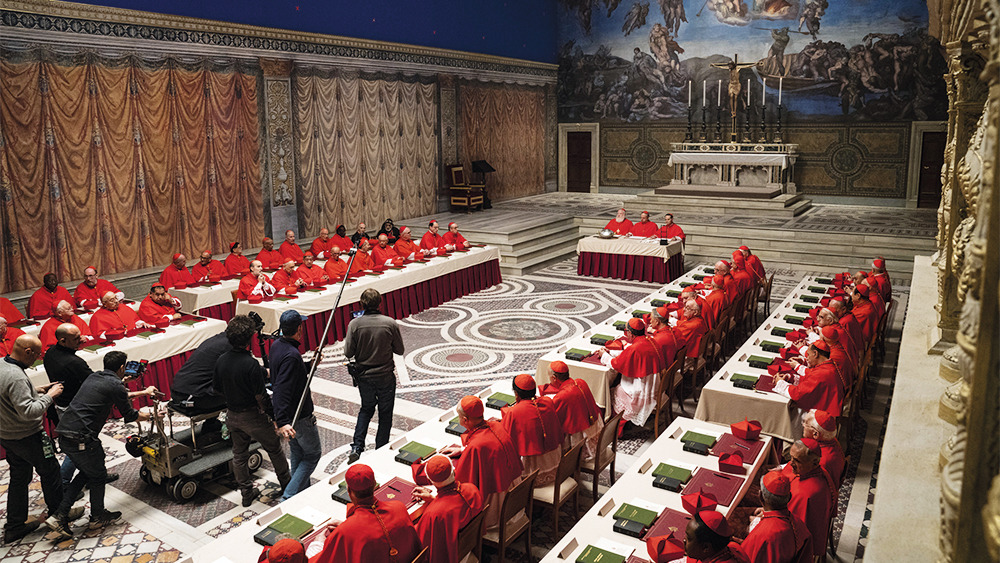Italian Casting Agents Hit the Streets for Fresh Talent for Shows Like ‘The New Pope’
By Nick Vivarelli
LOS ANGELES (Variety.com) – When Paolo Sorrentino needed a new conclave of cardinals for HBO’s “The New Pope,” his specialized casting agent Alessandra Troisi sent a team combing through Rome’s community centers for senior citizens who, she says, are the “biggest reservoirs” from which high-ranking prelates get picked.
For cloistered nuns, Swiss Guards and papal chair-lifters, instead they headed straight for the streets of the Eternal City, where they selected roughly 7,000 people from 65 countries who appear in the flamboyant show’s second series. “All the extras in Paolo’s movies or TV series come from street-casting, rather than being professional extras,” Troisi says. And Sorrentino always wants to know what these people do in real life. “He draws inspiration from this information,” she says.
For another Italian original, “My Brilliant Friend,” based on Elena Ferrante’s best-selling series of Neapolitan novels, casting agent Laura Muccino and her team saw roughly 9,000 kids between the ages of 7 and 16, from which, after 400 screen tests, they chose the leads, Margherita Mazzucco and Gaia Girace, who play Elena and Lila, respectively. They also cast the other children and adolescents appearing on the show, in a search that took place all over Naples. “There were 15 of us sifting through schools and leafleting on the streets,” Muccino recalls.
They were looking for people whose lives are as close as possible to the reality of the story, she says. “It’s not just a physical resemblance; it’s a soul and an attitude that are similar to that of the character.”
Following in the footsteps of the country’s neorealist heritage, Italian casting agents are increasingly resorting to street casting — except the recent trend is driven by TV, and the circumstances are different.
“We’re doing street casting for series that are set in very specific social contexts,” says Riccardo Tozzi, head of production company Cattleya, which makes the gritty, groundbreaking mob show “Gomorrah,” now in its fifth season, in which he notes, “authenticity prevails over [acting] technique.”
Tozzi thinks the big difference between neorealism and street casting is that the latter is being used mainly for secondary roles. For the leads, he says, “we consider professional acting a priority.” This wasn’t the case back in the days of Roberto Rossellini, he says, who didn’t shoot using direct sound and whose actors were dubbed.
But for the young nonprofessional leads in “My Brilliant Friend” who now also star in the show’s upcoming second season, “The Story of a New Name,” technique was clearly crucial. Before cameras started rolling, Mazzucco and Girace, as well as the kids in smaller roles, worked for months with acting coaches and did plenty of pre-shoot rehearsals with director and showrunner Saverio Costanzo.
That’s why “Brilliant Friend” producer Lorenzo Mieli dismisses the notion that street casting brings an economic advantage. “You have to consider the costs of coaching,” he says. That’s in addition to having to find people through a very elaborate process. And while at first these actors aren’t paid as much as the superstars, he adds, if the series is successful, their fee rises. “They become superstars themselves,” he explains. “So the supposed economic advantage is no longer there.”
Muccino points out that compared with the way Fellini used people from the street who briefly appeared in his films, her experience with “Brilliant Friend” is different, because several of the show’s nonprofessionals, not just the leads, “have to sustain months of work during which they must stay in character.” Their coaching continues through this part of the process as well, she adds.
Troisi recalls her first job working for Sorrentino. It was on his Oscar-winning “The Great Beauty,” specifically casting for the wild Rome rooftop disco bacchanal featured in the film’s second scene. “Most of the characters were from the street,” she says. Before going up on the roof, they did lots of choreography tests in a dance studio, which is standard practice. “With Paolo,” she adds, “we always work on the choreography.”
Similarly, to street-cast a scene in the opening credits of “” in which young cloistered nuns gyrate and dance in their nighties beneath a giant fluorescent crucifix — a scene that has, naturally, irked the Vatican — lots of screen tests and choreography checks were done. A basic requirement was that the prospective nuns could not have tattoos, Troisi notes.
As for the cardinals, not all were found in community centers for the elderly. One of the monsignors on “New Pope” is played by Chicco Testa, a prominent Italian businessman and former member of Parliament whom Sorrentino summoned because he “had the right face.” And perhaps also the right soul. “I’ve seen this happen on all of Paolo’s projects,” Troisi says.

